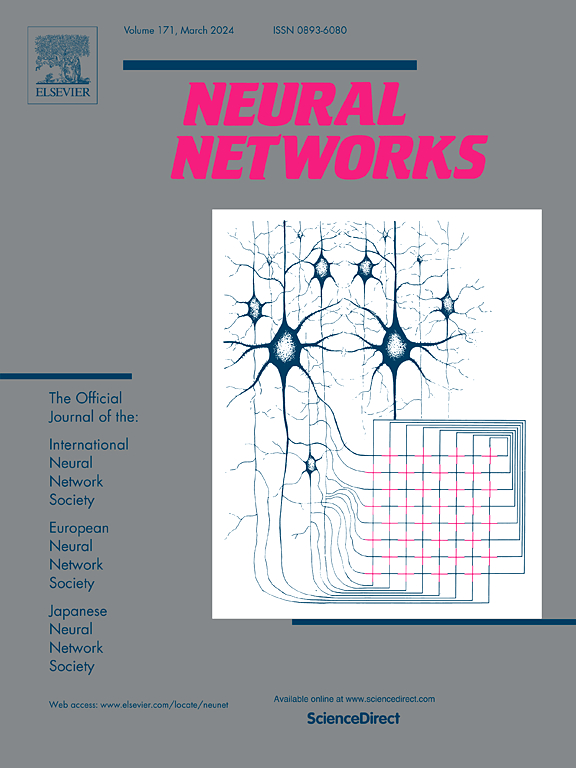Saccade and purify: Task adapted multi-view feature calibration network for few shot learning
IF 6
1区 计算机科学
Q1 COMPUTER SCIENCE, ARTIFICIAL INTELLIGENCE
引用次数: 0
Abstract
Current few-shot image classification methods encounter challenges in extracting multi-view features that can complement each other and selecting optimal features for classification in a specific task. To address this problem, we propose a novel Task-adapted Multi-view feature Calibration Network (TMCN) inspired by the different saccade patterns observed in the human visual system. The TMCN is designed to “saccade” for extracting complementary multi-view features and “purify” multi-view features in a task-adapted manner. To capture more representative features, we propose a multi-view feature extraction method that simulates the voluntary saccades and scanning saccades in the human visual system, which generates global, local grid, and randomly sampled multi-view features. To purify and obtain the most appropriate features, we employ a global local feature calibration module to calibrate global and local grid features for achieving more stable non-local image features. Furthermore, a sampling feature fusion method is proposed to fuse the randomly sampled features from classes to obtain better prototypes, and a multi-view feature calibrating module is proposed to adaptively fuse purified multi-view features based on the task information obtained from the task feature extracting module. Extensive experiments conducted on three widely used public datasets prove that our proposed TMCN can achieve excellent performance and surpass state-of-the-art methods. The code is available at the following address: https://github.com/huyunzuo/TMCN.
扫视和净化:任务适应的多视图特征标定网络,用于少镜头学习
当前的小镜头图像分类方法在提取相互补充的多视图特征以及在特定任务中选择最优特征进行分类方面遇到了挑战。为了解决这个问题,我们提出了一种新的任务适应多视图特征校准网络(TMCN),该网络的灵感来自于人类视觉系统中观察到的不同扫视模式。TMCN设计用于“扫视”以提取互补的多视图特征,并以任务适应的方式“净化”多视图特征。为了捕获更多具有代表性的特征,我们提出了一种模拟人类视觉系统中自发扫视和扫描扫视的多视图特征提取方法,生成全局、局部网格和随机采样的多视图特征。为了净化和获得最合适的特征,我们使用全局局部特征校准模块对全局和局部网格特征进行校准,以获得更稳定的非局部图像特征。在此基础上,提出了采样特征融合方法,对随机采样的类特征进行融合,获得更好的原型;提出了多视图特征校准模块,根据任务特征提取模块获得的任务信息,自适应融合纯化的多视图特征。在三个广泛使用的公共数据集上进行的大量实验证明,我们提出的TMCN可以取得优异的性能,并且超越了最先进的方法。代码可在以下地址获得:https://github.com/huyunzuo/TMCN。
本文章由计算机程序翻译,如有差异,请以英文原文为准。
求助全文
约1分钟内获得全文
求助全文
来源期刊

Neural Networks
工程技术-计算机:人工智能
CiteScore
13.90
自引率
7.70%
发文量
425
审稿时长
67 days
期刊介绍:
Neural Networks is a platform that aims to foster an international community of scholars and practitioners interested in neural networks, deep learning, and other approaches to artificial intelligence and machine learning. Our journal invites submissions covering various aspects of neural networks research, from computational neuroscience and cognitive modeling to mathematical analyses and engineering applications. By providing a forum for interdisciplinary discussions between biology and technology, we aim to encourage the development of biologically-inspired artificial intelligence.
 求助内容:
求助内容: 应助结果提醒方式:
应助结果提醒方式:


